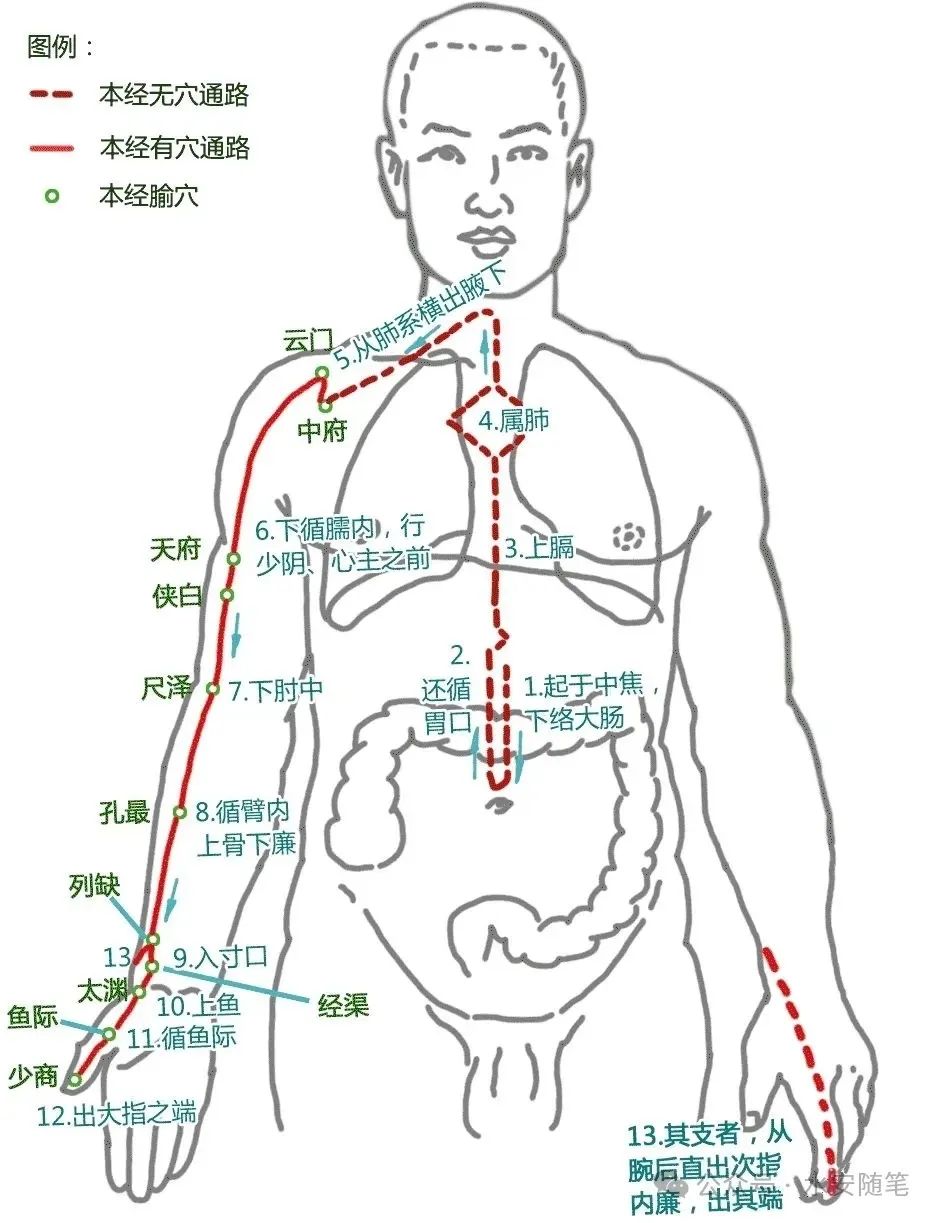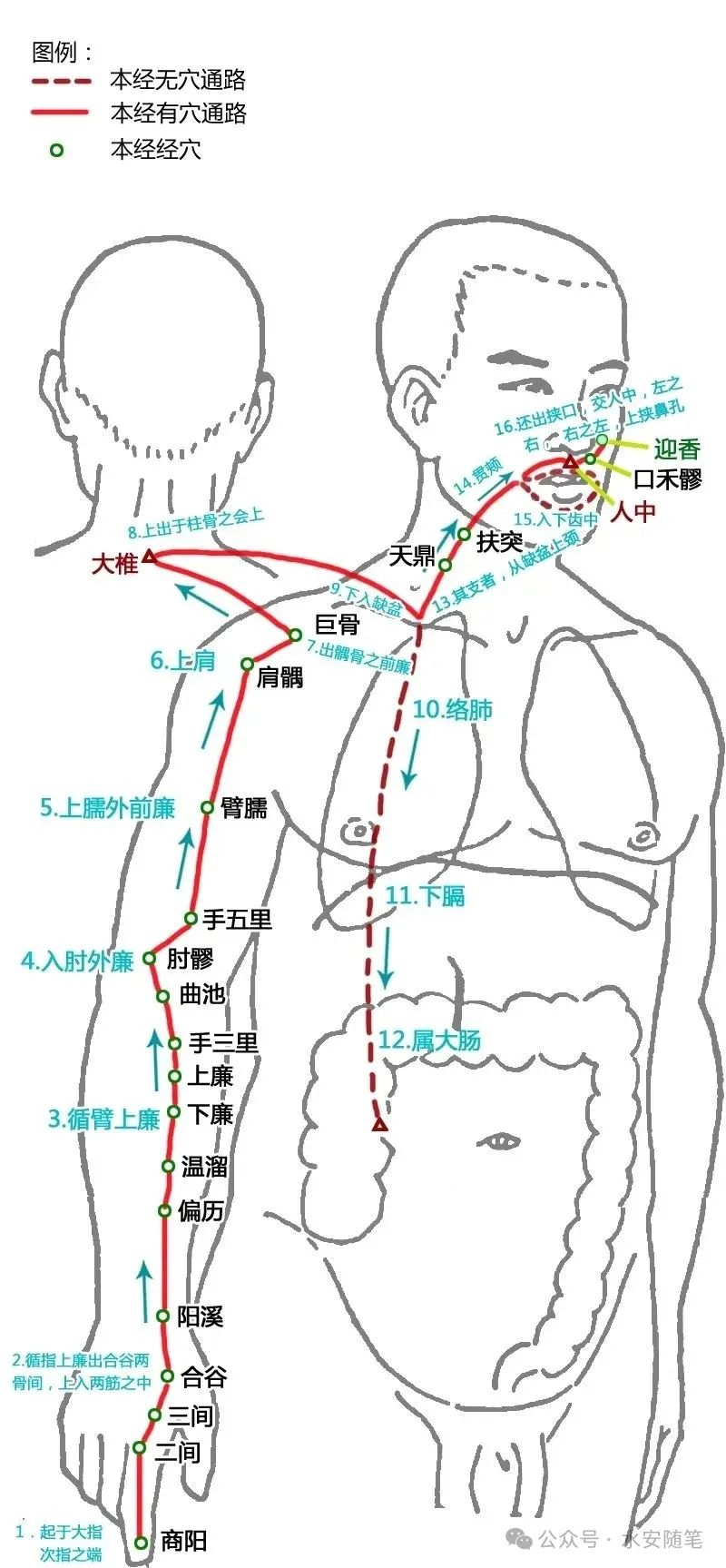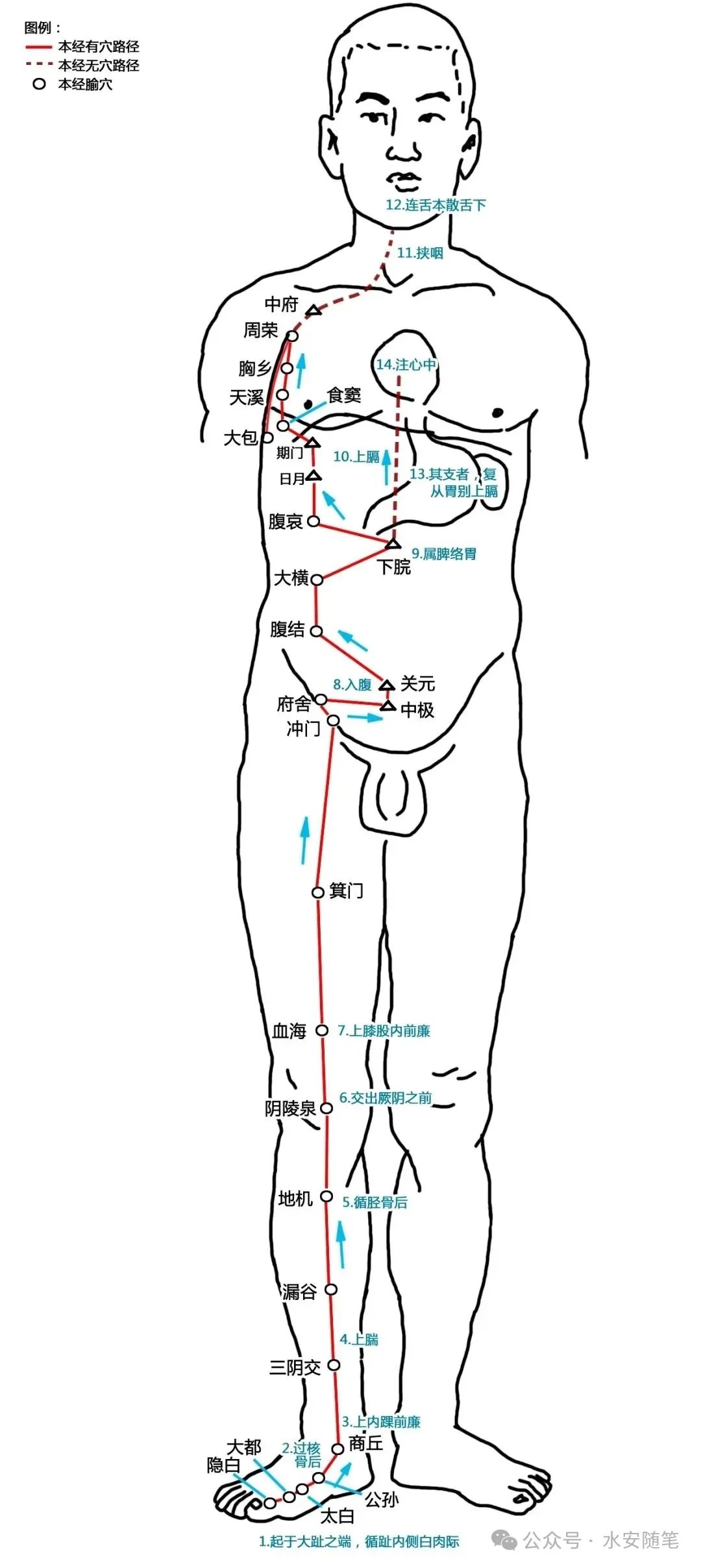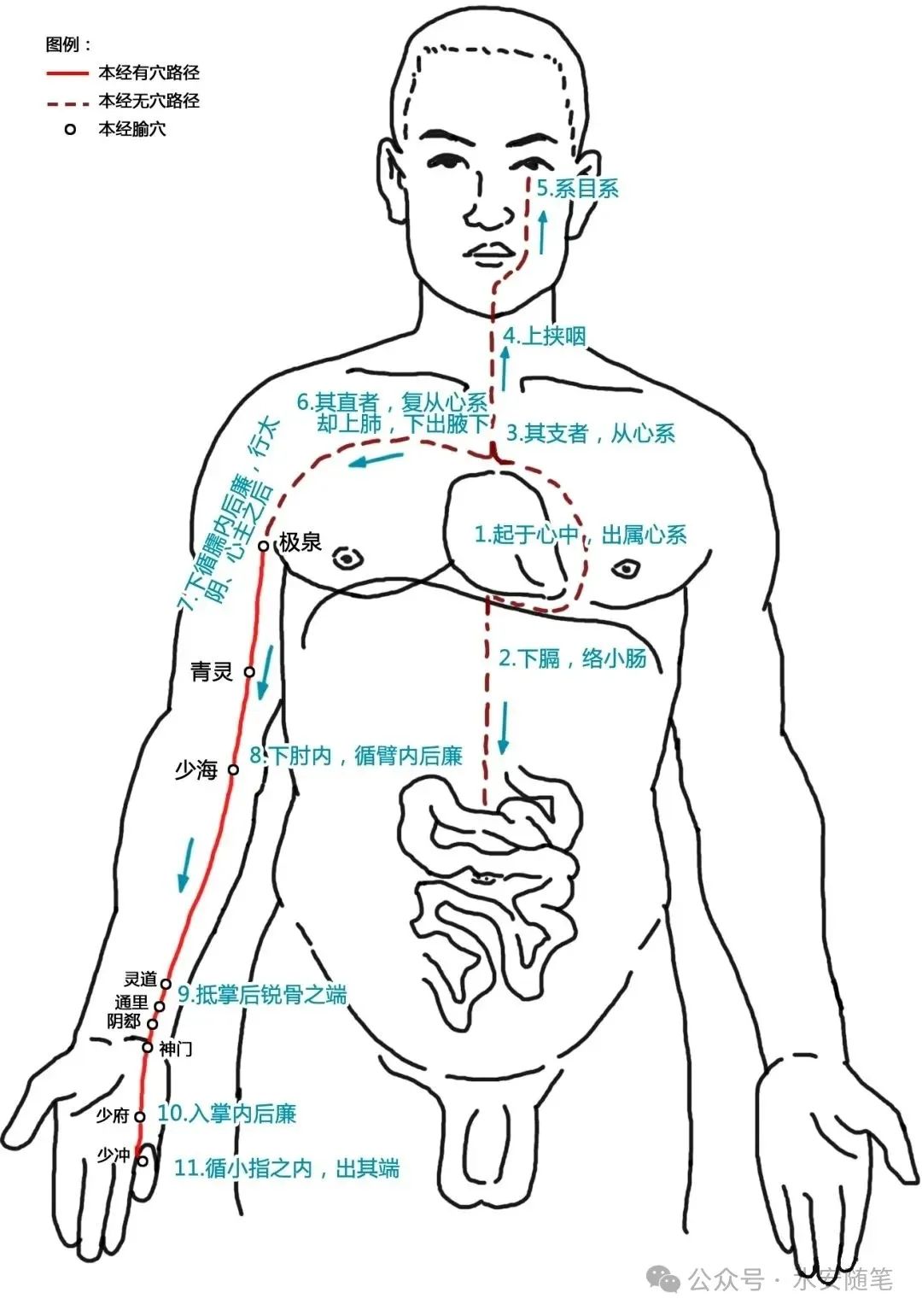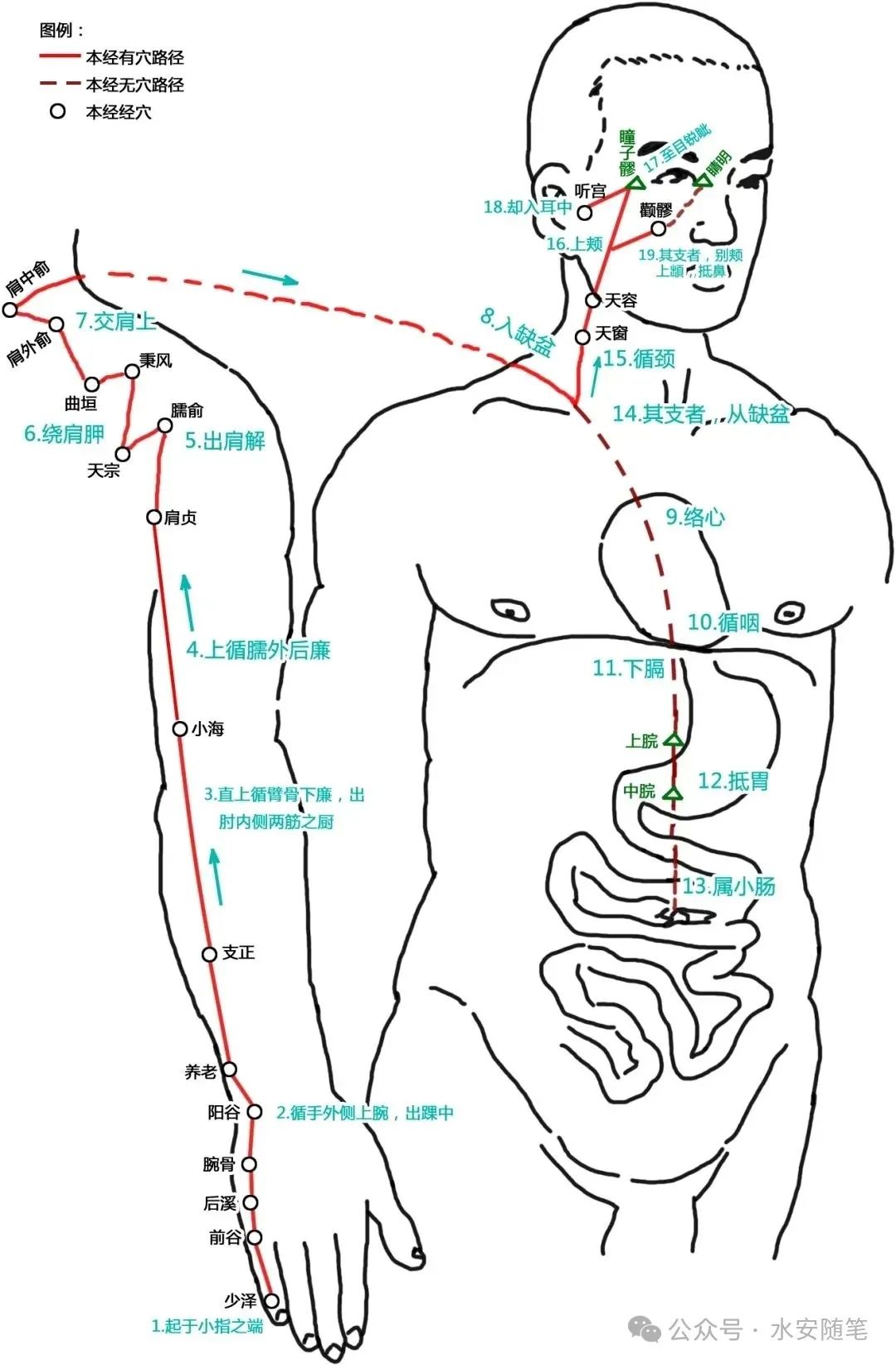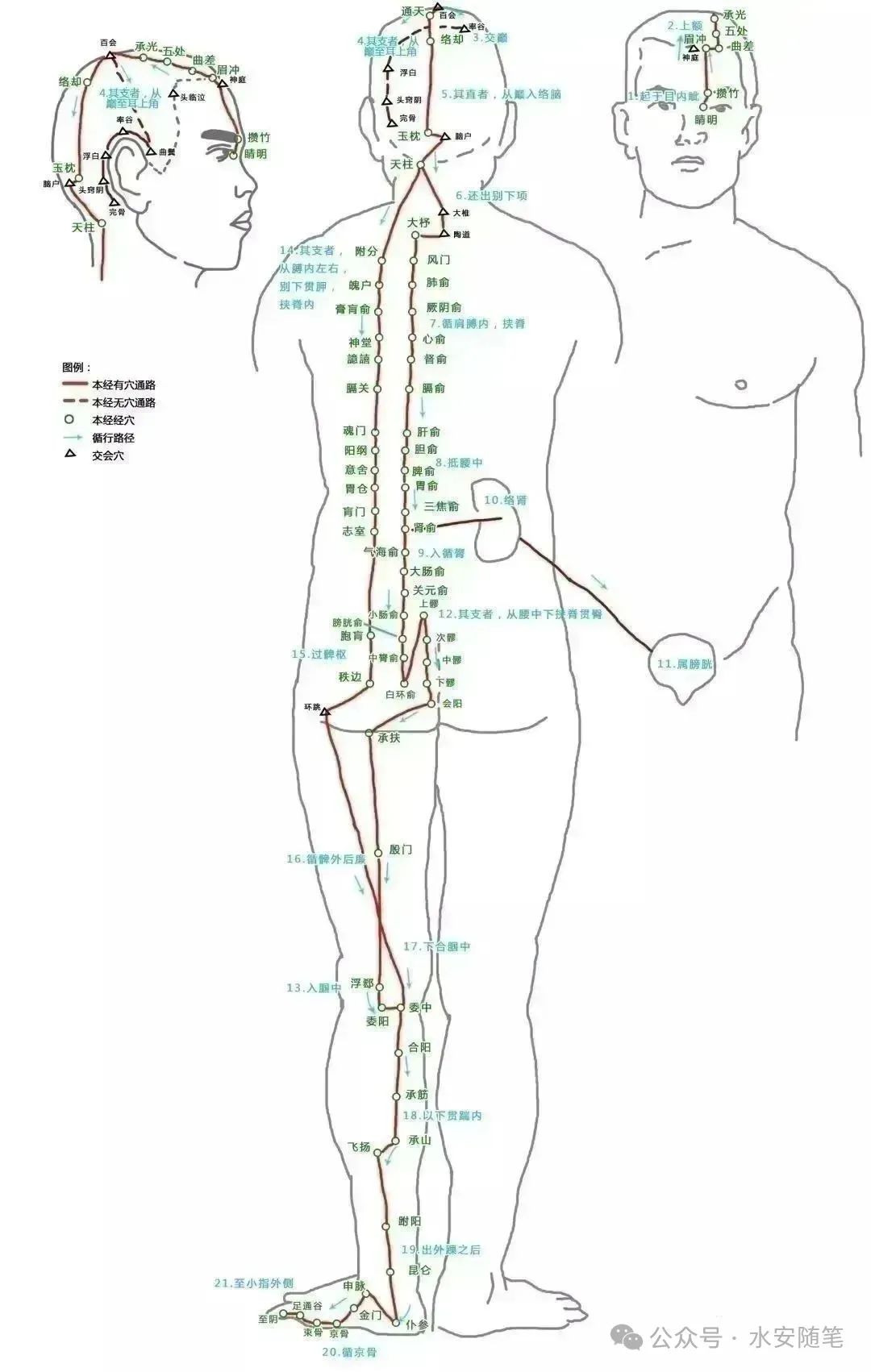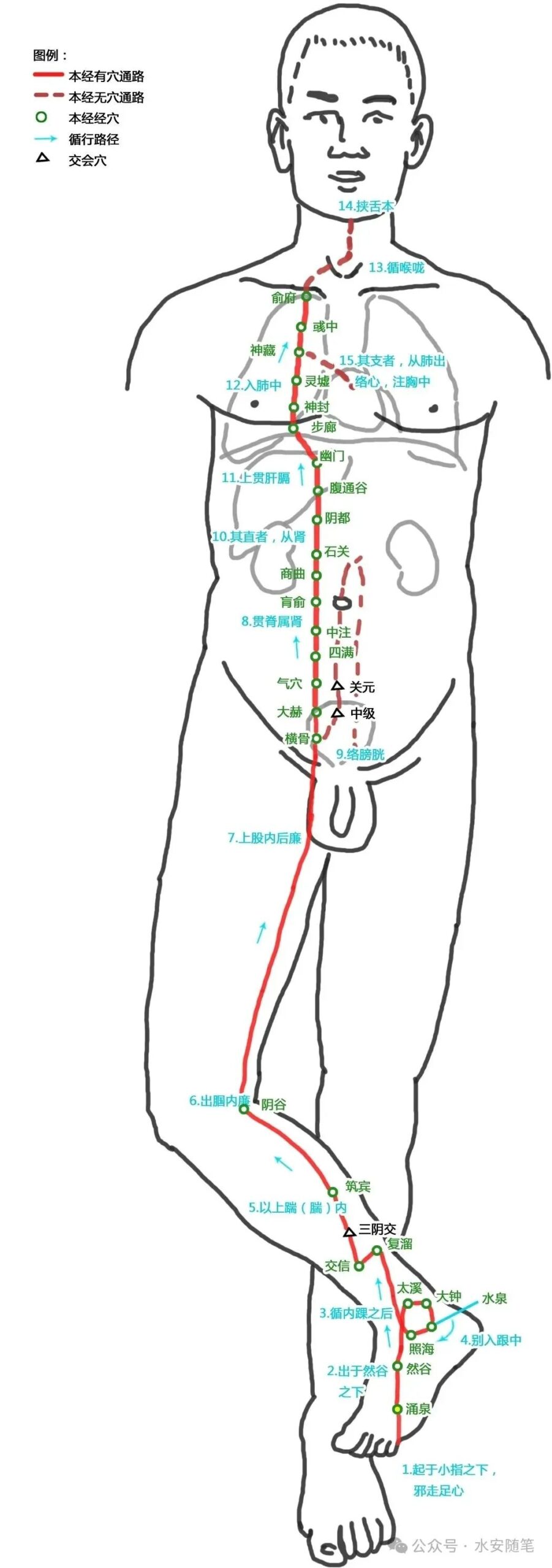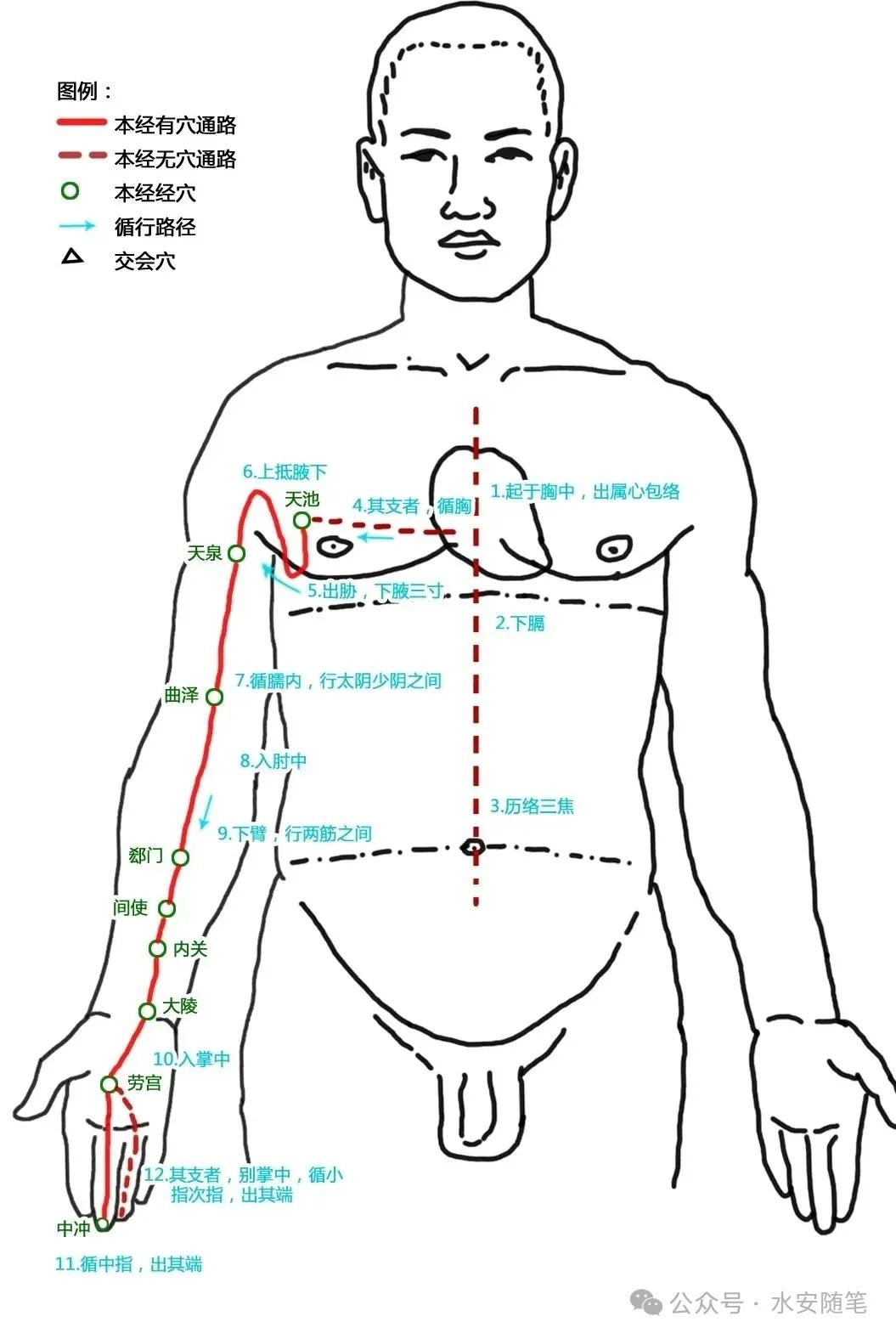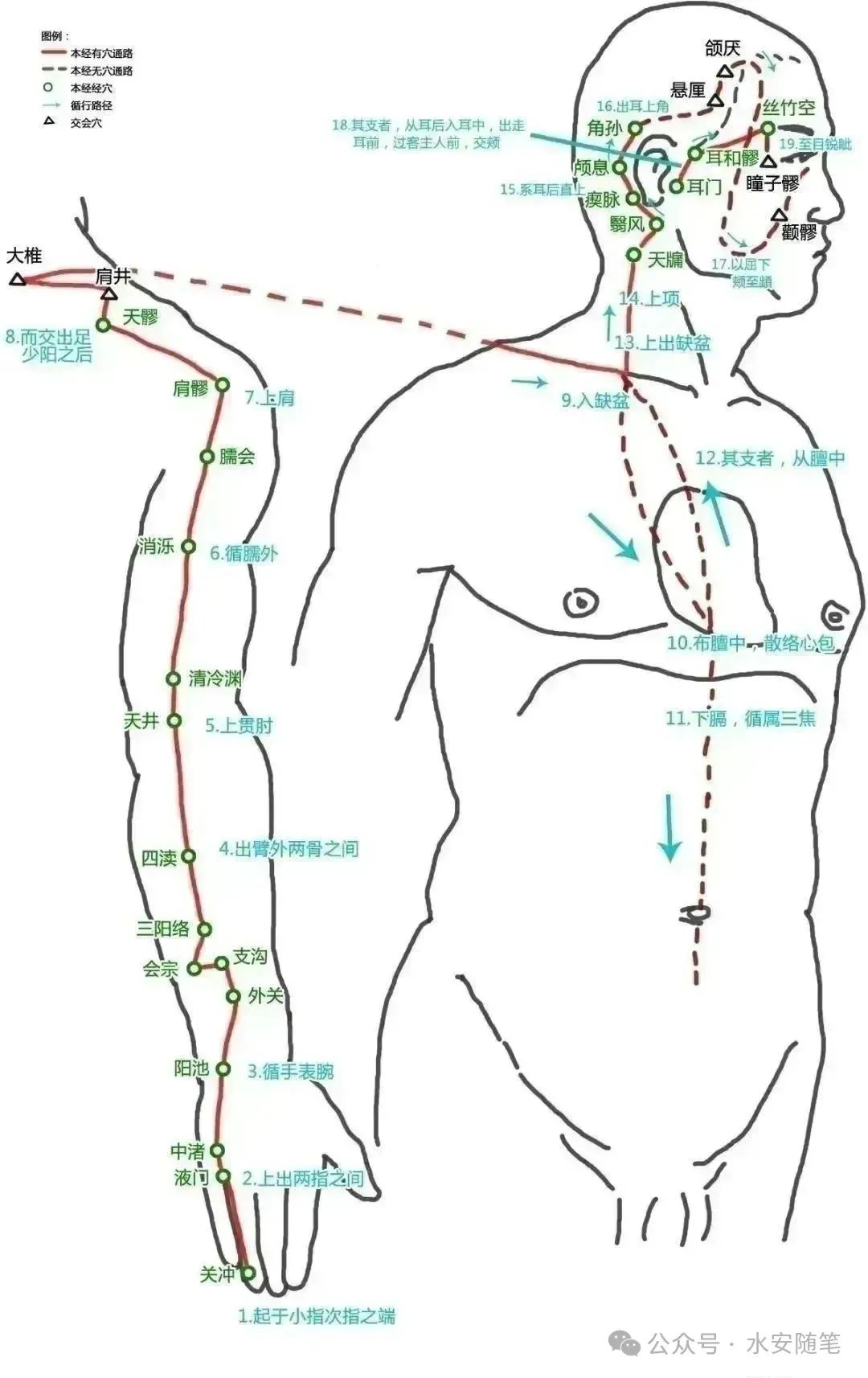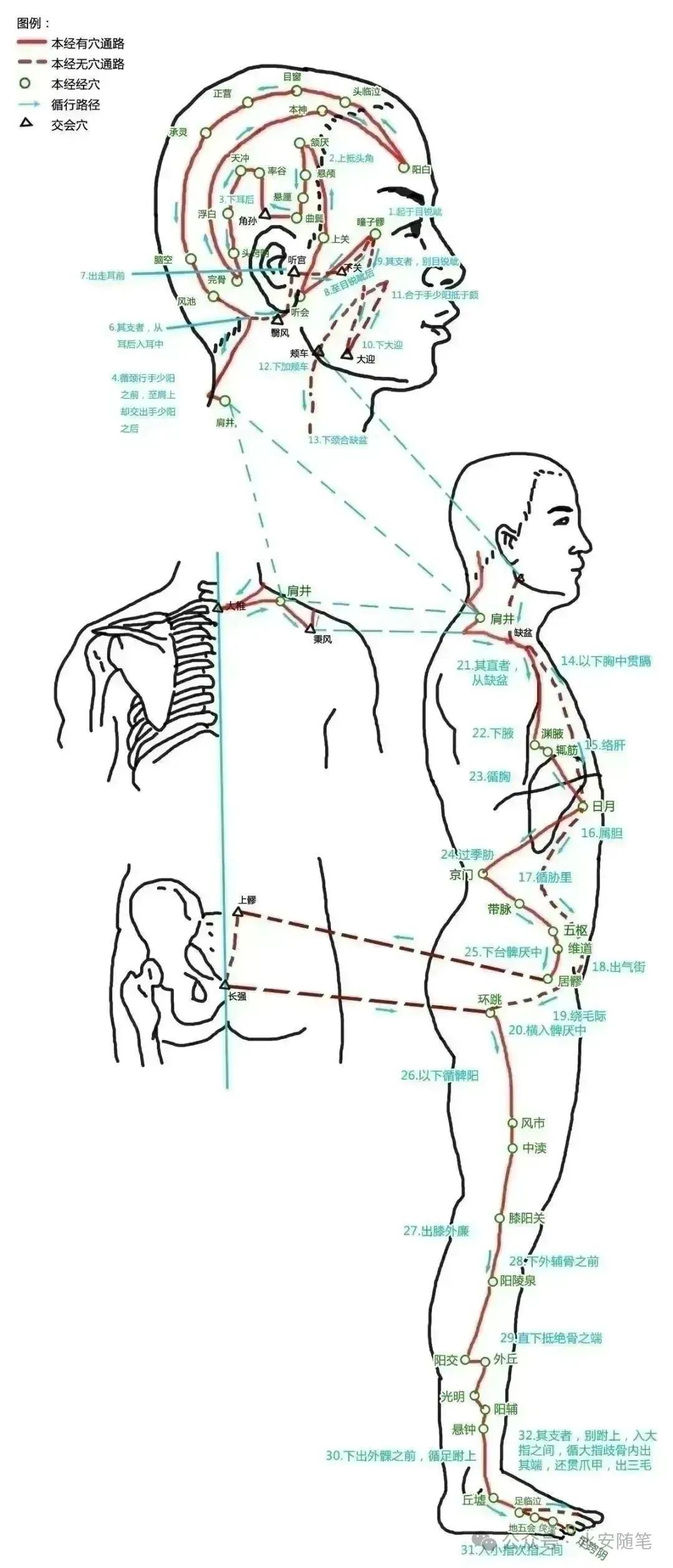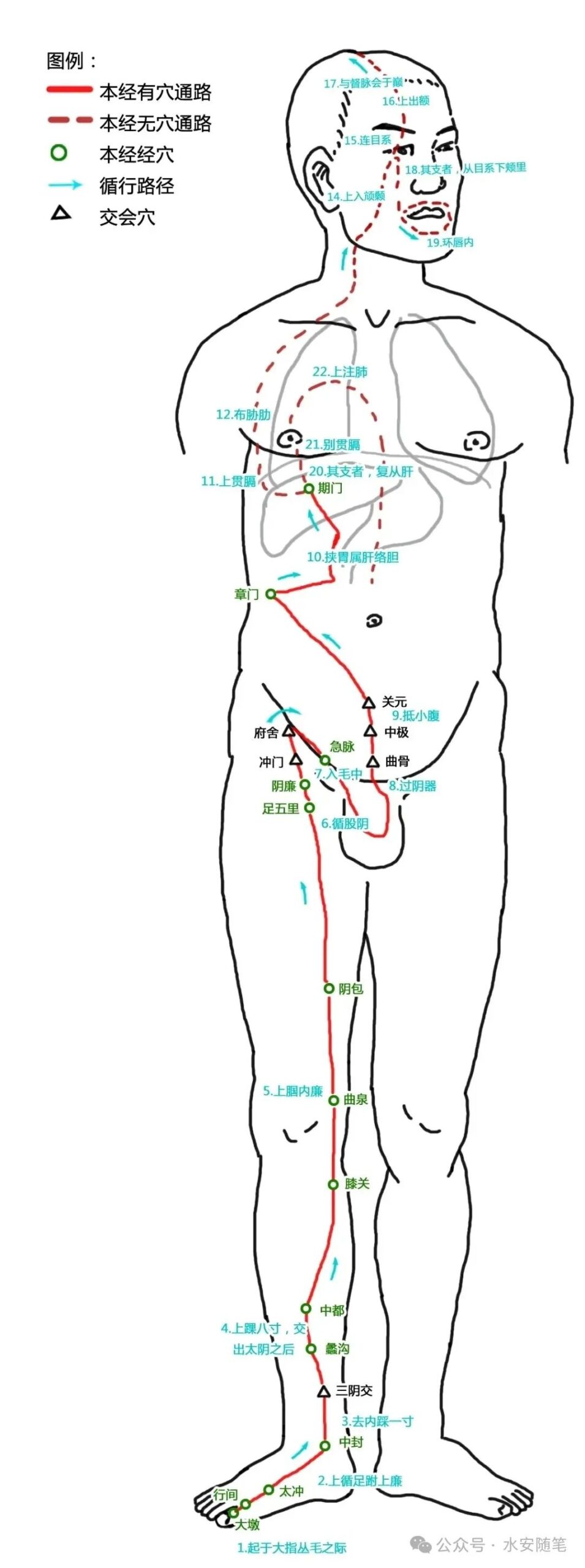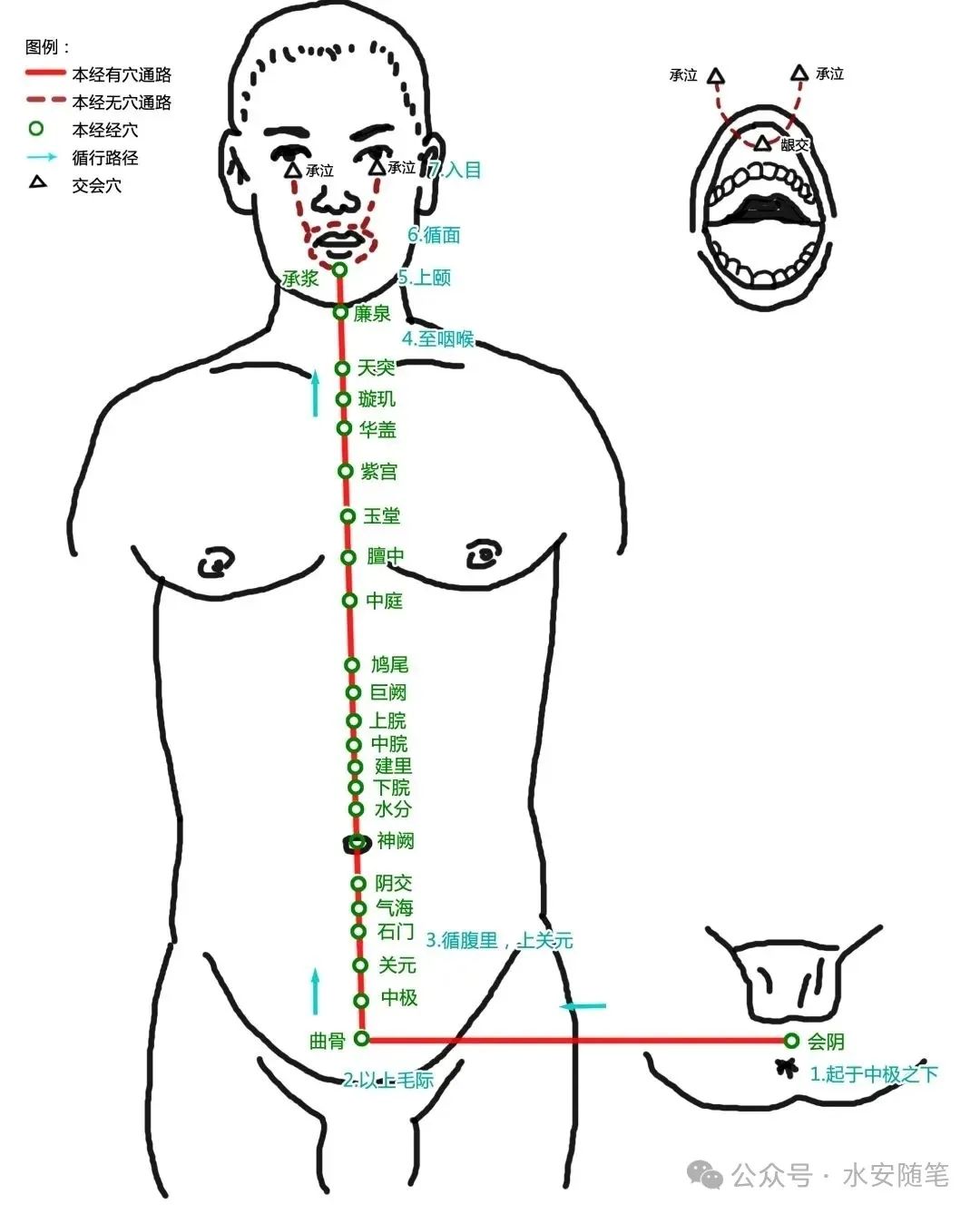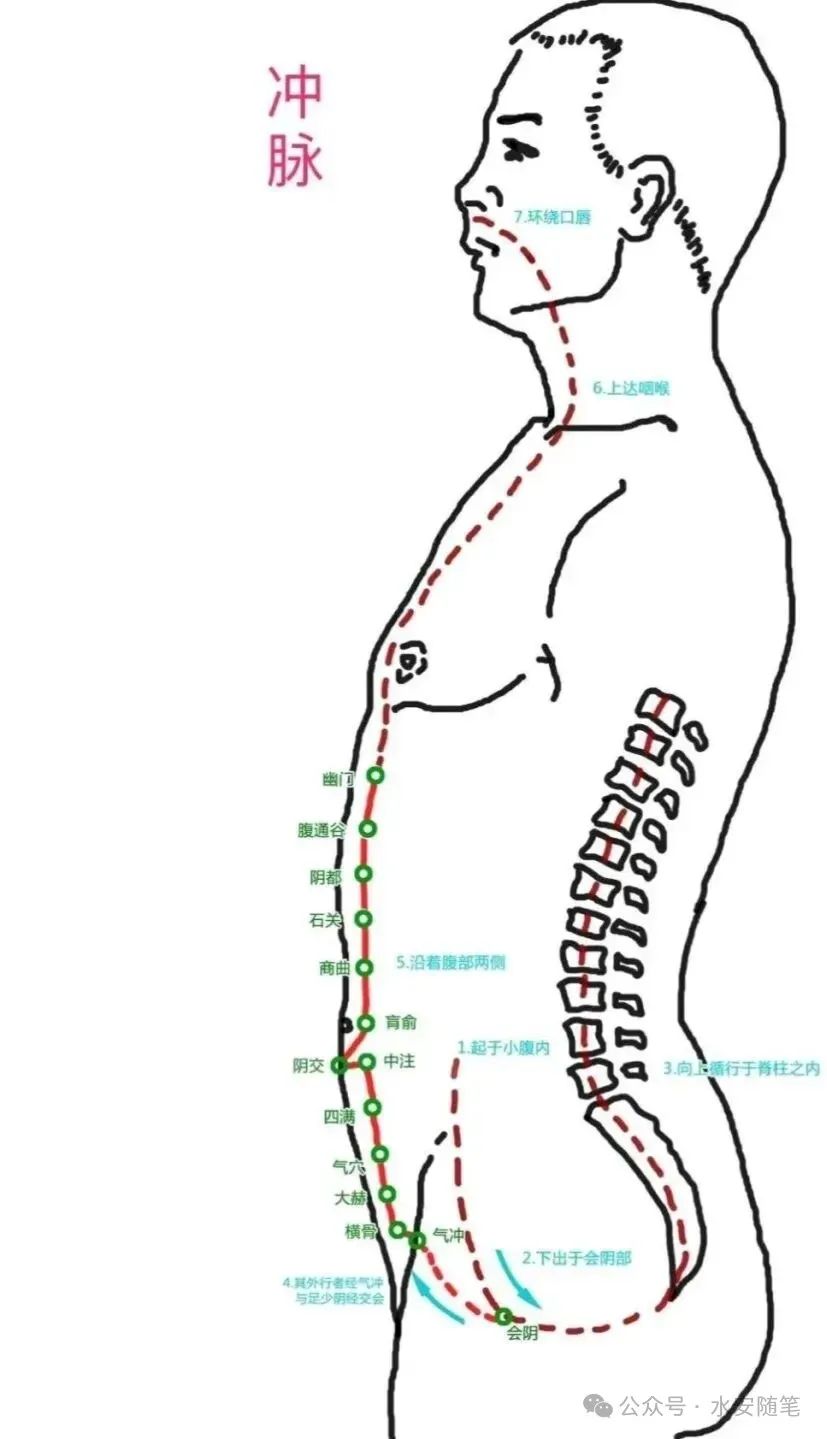Ren Mai (Ren Meridian) is located at the front of the chest, where the heart and spleen-stomach are obstructed; it connects the breasts above and the uterus below, and if obstructed, one may age prematurely.
Du Mai (Du Meridian) runs along the spine, supervising the flow of Qi and blood; it corresponds to the five organs and six bowels, with pain in the corresponding areas when obstructed.
Gallbladder Meridian runs along the pant line, where secretion disorders can affect the nervous system; symptoms include drowsiness, excessive sweating, fatigue, swollen armpits, and headaches at the back of the head; lymphatic inflammation can cause localized swelling, and one may experience blurred vision and jaundice.
Liver Meridian corresponds to the Gallbladder Meridian, controlling circulation and secretion; symptoms include a bluish complexion, waist pain, dark circles under the eyes, dysmenorrhea, dry eyes, and excessive eye discharge, indicating excessive liver fire.
The Kidney Meridian is located behind the Liver Meridian, just two finger widths apart; it controls the secretion system, with symptoms of scanty urination and frequent urination; bags under the eyes, wrinkles, cold feet, and swollen lower limbs may indicate anxiety; premenstrual symptoms include lower back pain and facial blemishes, while memory decline and insomnia suggest stagnation.
The Kidney Meridian corresponds to the Bladder Meridian, controlling the urinary and skeletal systems; symptoms include yellow urine and bladder pain, urinary tract infections, weakness in the limbs, back pain, and difficulty sitting due to hemorrhoids.
Stomach Meridian is located in front of the Gallbladder Meridian, three finger widths away; symptoms include oral ulcers, swollen gums, dry mouth, bad breath, abdominal distension, and heat sensation with preference for cold foods, as well as constipation.
The Stomach Meridian corresponds to the Spleen Meridian, controlling immunity and the nervous system; symptoms include stomach distension, belching, difficulty in vomiting, rib pain, varicose veins, and low blood pressure, as well as rheumatism and joint pain.
The index finger corresponds to the Large Intestine Meridian, located on the outer side of the arm; it controls digestion and the nervous system; if there is pain, abdominal distension may occur; symptoms include constipation, dry mouth, shoulder and neck pain, heat in the body, hemorrhoids, and headaches.
From the chest to the thumb is the Lung Meridian, located on the inner side of the arm; it controls respiration and immunity; symptoms include dehydration, sensitivity, nasal congestion, heat in the body, sweating, back acne, dry throat, and pain during swallowing; colds may cause internal emptiness.
From the heart to the little finger is the Heart Meridian, located on the inner side of the arm; it controls the circulatory system; symptoms include chest heaviness and headaches; irritability, insomnia, and frequent dreams, along with pain in the shoulders and chest; red eyes, flushed cheeks, dry mouth, poor blood circulation, and a tendency to be quiet; excessive worries and stress.
The little finger corresponds to the Small Intestine Meridian, located on the outer side of the arm; it controls digestion and the nervous system; symptoms include pain in the solar plexus and ears; premenstrual abdominal distension and headaches, as well as back pain from the shoulder blades to the back.
From the chest to the middle finger is the Pericardium Meridian, located on the inner side of the arm; it controls secretion and circulation; symptoms include circulatory issues and vascular diseases; rapid heartbeat and constipation, irritability, red eyes, and pain in the upper limbs.
From the ring finger to the shoulder is the San Jiao Meridian, located on the outer side of the arm; it controls secretion and circulation; symptoms include decreased immunity and depression; fatigue and susceptibility to chronic diseases.

